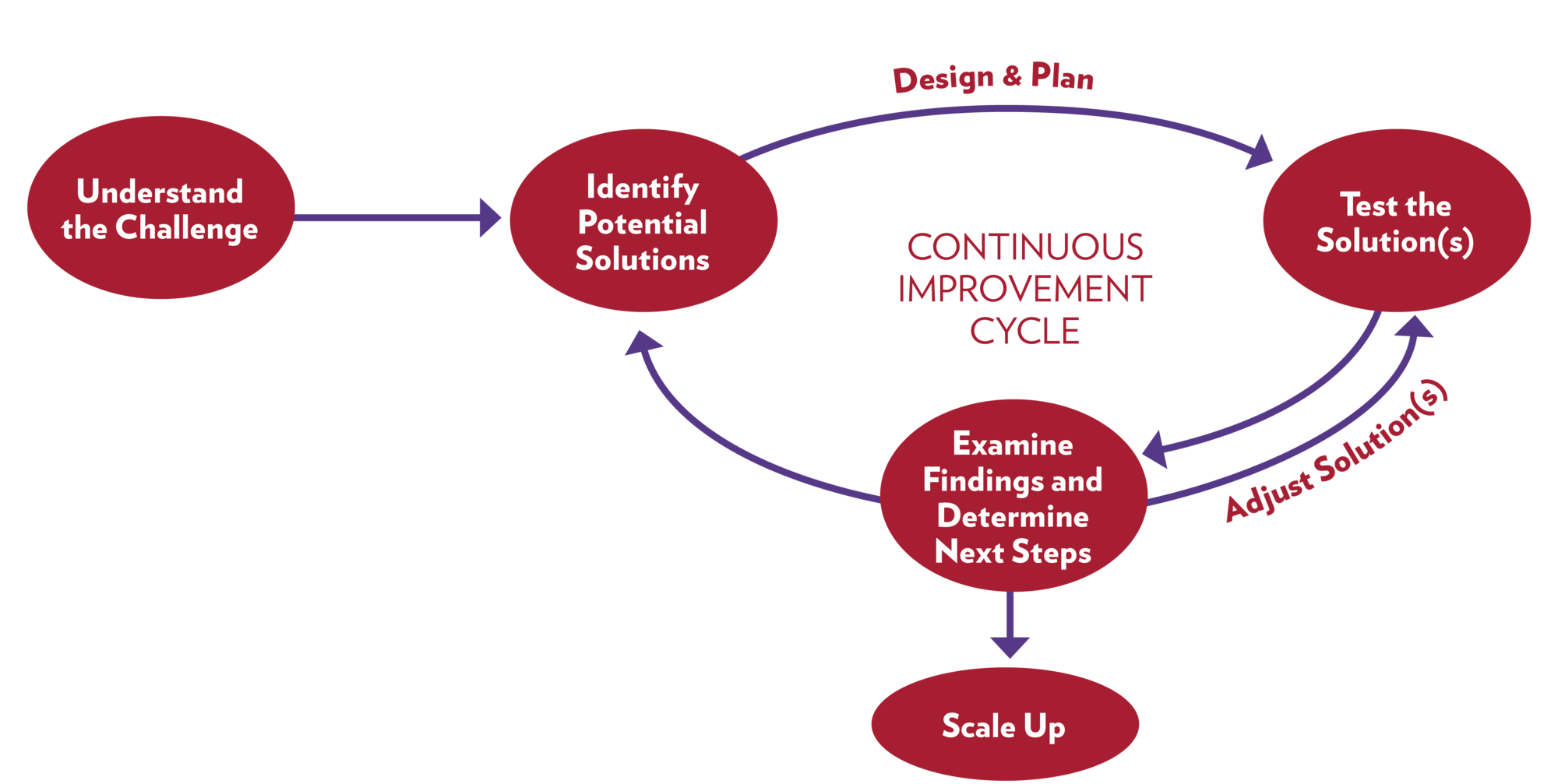We use a continuous improvement process designed to build the capacity of rural districts, engage district staff as key decision makers throughout the process, and foster collaboration and cross-district learning, while generating evidence about what works in rural education.
Continuous Improvement Approach

Understand the Challenge
We begin our work by analyzing partner districts' data diagnostics and conducting interviews with district and school staff. Through this process, we uncover key issues and trends that contribute to the challenge each district seeks to address.
For example, for districts struggling with high rates of absenteeism, staff will consider why their students might miss school and possible barriers to their attendance. The root cause analysis process focuses the conversation on understanding the “why” underpinning their data trends to ensure solutions align with the challenges they seek to address.
Identify Potential Solutions
NCRERN provides districts with a catalog of potential evidence-based programs and strategies aligned to the challenges and root causes identified in step 1. NCRERN districts then participate in a voting process to select interventions to test collectively as a network.
Design and Plan
Districts select an intervention to test then plan how the intervention will be implemented within their context. Staff may discuss how the intervention aligns with or complements existing programming or initiatives, as well as how it addresses gaps in currently available supports. While each intervention has certain core components that all districts in the network implement, individual districts also have the flexibility to adjust and adapt the intervention to fit their unique needs.
Pilot and Test
Once districts have established a plan for implementation, they are ready to launch their intervention. Throughout the year, districts receive ongoing implementation support from the NCRERN team. Staff are encouraged to reflect on implementation data in real time. Using these data, they can identify aspects of the intervention that are going well as well as where stakeholders may need additional support, and adjust practices to ensure successful implementation.
Examine Findings and Determine Next Steps
At the end of the piloting period, the NCRERN team generates results for network districts. Based on the network findings, NCRERN provides one of three recommendations for the next steps: scale up, redesign and retest, or discontinue the program. District teams reflect on their own experiences implementing their program and decide how to proceed for the next year.
Considering districts’ implementation experiences alongside impact findings provides a more nuanced understanding of the viability of the programs piloted by NCRERN districts and enables districts to make informed decisions about future programming.
Our Network: Strength in Numbers
Rather than relying on anecdotal advice or popular trends, network partners have access to real data from districts with shared challenges. While network partners may test different solutions due to varying capacity and context, all partners benefit from shared insights on what works and what doesn’t, enabling them to rapidly identify solutions.
